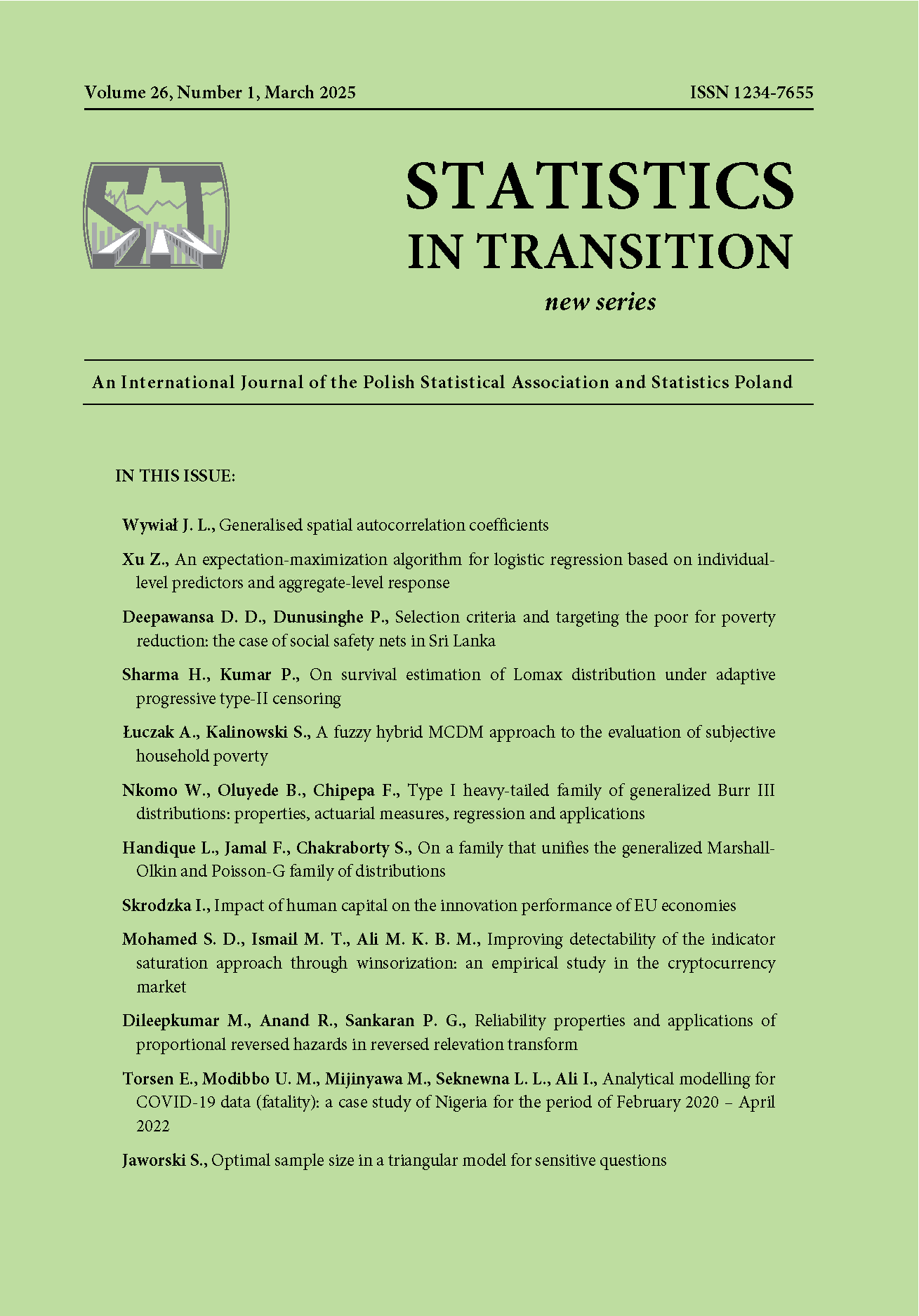Analytical modelling for COVID-19 data (fatality): a case study of Nigeria for the period of February 2020 – April 2022
Analytical modelling for COVID-19 data (fatality): a case study of Nigeria for the period of February 2020 – April 2022
Author(s): Emmanuel Torsen, Umar Muhammad Modibbo, Mohammed Mijinyawa, Lema Logamou Seknewna, Irfan AliSubject(s): Economy, Socio-Economic Research
Published by: Główny Urząd Statystyczny
Keywords: ARIMA; Covid-19; Nigeria; Modeling; ZINBAR; ZINPAR;
Summary/Abstract: One of the most significant disruptive events of the 21st century was the COVID-19 epidemic, which was first detected in China in 2019 and quickly spread around the world. While waiting for the development of the vaccine, governments used a variety of strategies to counteract the effects of the pandemic: from simple personal hygiene advice to the introduction of strict lockdowns. In this paper, the confirmed cases of COVID-19 fatalities (count data and having zero inflation) due to COVID-19 in Nigeria modeled using univariate time series models. To describe the attributes of COVID-19 fatalities in Nigeria with zero inflation, the autoregressive integrated moving average (ARIMA), zero-inflated poison autoregressive (ZIPAR), and zero-inflated negative binomial autoregressive (ZINBAR) models were used. Our findings indicate that ZINBAR(1) having the lowest root mean square error (RMSE), the Akaike information criterion (AIC), and the Bayesian information criterion (BIC) outperforms the other two models: Hence, the ZINBAR(1) performs better than the ZIPAR(1) (this is in aggrement with the work of Tawiah et al. (2021)) and the ARIMA(0,1,1). This demonstrates and emphasised the fact that for count time series data, count time series models should be used. Hence, the ZINBAR(1) can be use to predict and forecast COVID-19 in Nigeria.
Journal: Statistics in Transition. New Series
- Issue Year: 26/2025
- Issue No: 1
- Page Range: 205-220
- Page Count: 16
- Language: English

